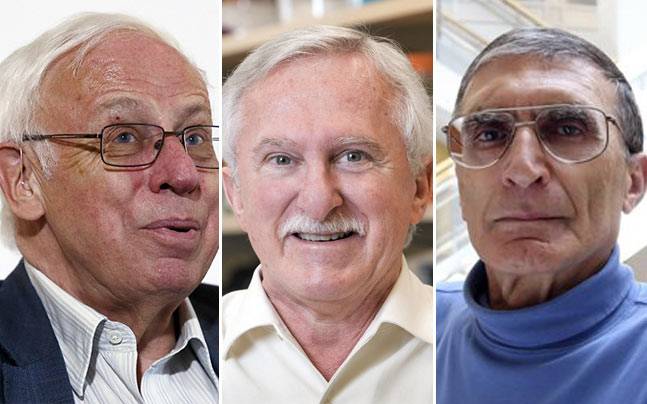Three scientists win Nobel Prize in Chemistry
Back in the 1970’s, scientists speculated that the DNA was a highly stable molecule. At the time, it was the best explanation of why life on earth exists. Then came three scientists, Dr. Tomas Lindhal, Dr. Paul L. Modrich and Dr. Aziz Sancar who disproved this claim, earning them a Nobel Prize in Chemistry. They showed that our DNA actually decays at a rate that makes it impossible for life to develop on Earth. Their discovery showed the existence of special proteins that constantly repair any damages to the DNA which also explains why life developed on Earth.
“Life as we know it today is totally dependent on DNA repair,” according to Sara Snogerup Linse of the Nobel Prize Committee.
In terms of individual contributions, Dr. Lindhal was honored for his work on base excision repairs. This is the cellular mechanism explained earlier on that repairs damaged DNA during a cell cycle. Dr. Modrich was honored for his work on showing how cells correct errors during DNA replication in cell division. Dr. Sancar was honored for mapping the cellular mechanism used to repair ultraviolet damage to DNA.
“Their systematic work has made a decisive contribution to the understanding of how the living cell functions, as well as providing knowledge about the molecular causes of several hereditary diseases and about mechanisms behind both cancer development and aging,” according to a statement by the Royal Swedish Academy of Sciences.
Our DNAs get damaged every day. This might be due to the radiation from the sun, smoking cigarettes or taking drugs and substances that carry cancer. It is estimated that our DNAs get damaged thousands of times in just one day. Moreover, every damage is potentially very dangerous. This is because the DNA that has been altered could possibly become cancerous. In order to prevent that, special proteins in our body constantly monitor the state of our DNA and get rid of any one that seems to be defective.
Every damage – whatever it is – could become very dangerous,” said Karsten Rippe from the German Cancer Research Center in Heidelberg during an interview with DW.
When this repair system starts malfunctioning, there can be severe consequences. Consider the Li-Fraumeni Syndrome where the patients lack enough number of these special proteins. Such patients have a 50% risk of getting cancer by the age of 30. This is quite significant especially when compared to the risk of a normal person which is 1%.
It is important to note that although these three scientists were awarded the Nobel Prize, they worked independently from each other. Their research directions were parallel but they all approached the problem from a different angle. Dr. Lindhal researched on human DNA stability while Dr. Modrich worked on bacteria’s sensitivity to UV and Dr. Sancar worked with enzymes.






